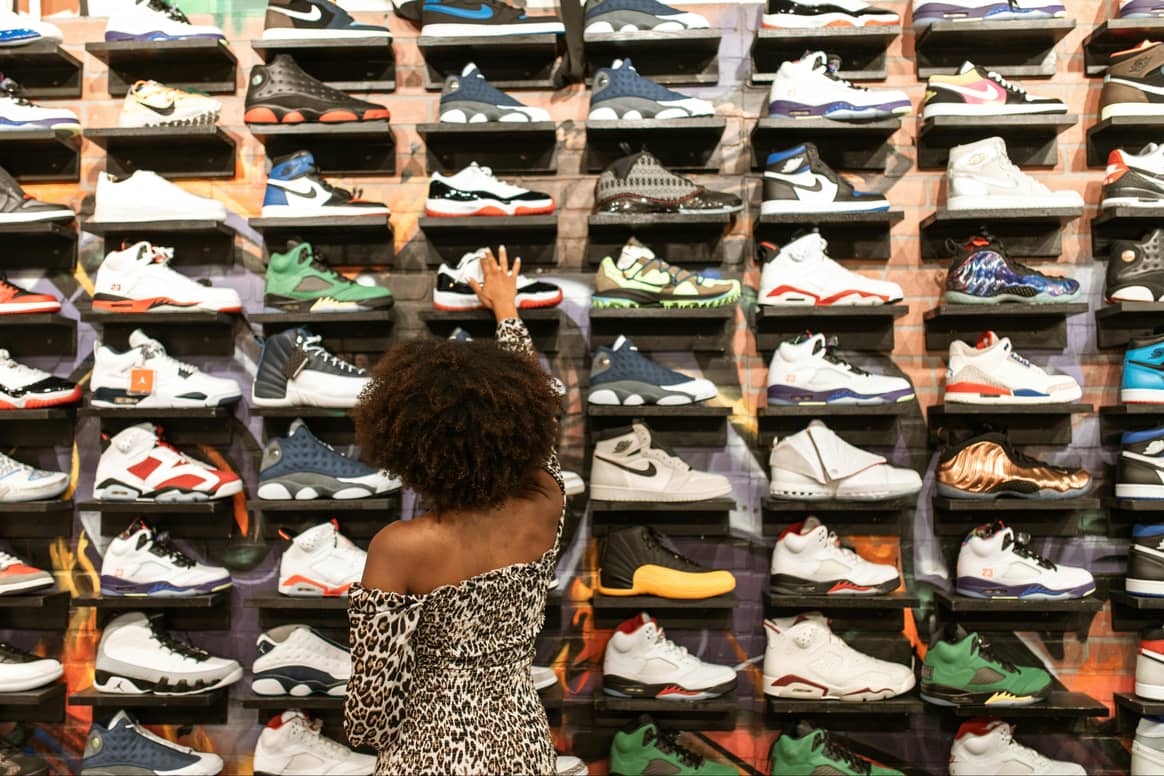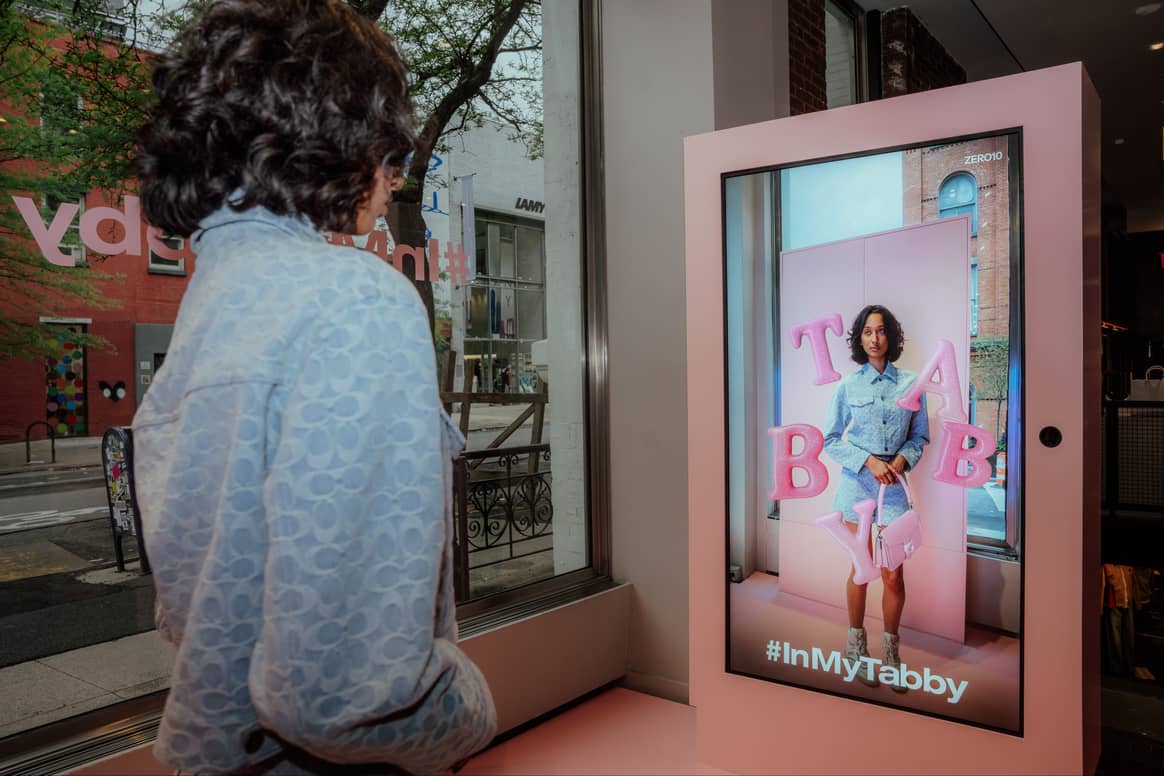Interested to know the what, why, and how US consumers will make their fashion purchases throughout the year? To help shed some light on the shopping habits of consumers nationwide, the newly launched platform MMGNET published a US consumer outlook for 2024. Based on research carried out by BoF Insights, the think tank at the Business of Fashion, the report offers practical insights for fashion companies in the mass market, mid-market, luxury, and second-hand sectors on what to expect for the year to come. Here, we share some of the report’s main takeaways.
76 percent of consumers surveyed plan to spend as much or more on fashion in 2024 compared to 2023. All consumers questioned, minus those aged 55 and up, intend to increase their fashion spend in 2024. Those between 18 and 34 showed the greatest intent to spend more compared to 2023, with Gen-Z, in particular, viewing shopping as a form of entertainment.
Overall, consumers ranked fashion among the top five categories they intend to spend on in 2024, with restaurant and dining out in first place, travel in second place, health & fitness in third place, and beauty & personal care in fourth. According to the report, Gen-Z will over-index on health and fitness. However, while consumers aim to spend more on apparel, footwear, and beauty categories, they may reduce spending on accessories or items seen as less necessary, such as handbags, jewelry, watches, and luggage.
76% of US consumers to spend more on fashion in 2024
As consumers continue to live hybrid lifestyles, going between remote work locations, office settings, and social gatherings, demand for versatile wardrobe pieces that are adaptable increases. This consumer trend is marked by a consistent preference for casual sportswear, coupled with a growing inclination towards investing in classic statement pieces and subtle luxury items made for extended use. In 2024, the trend of style fusion, which involves combining tailored and formal wear with casual elements, is expected to evolve with fresh variations.

The apparel category will likely witness the most rapid growth in 2024 as consumers shop for new outfits for all occasions. More consumers revealed that they are interested in buying more jeans versus any other bottoms, minus men between the ages of 18 and 24, who are set to shop for other styles. Demand for comfortable and stylish sportswear is likely to remain strong in 2024, as interest in athleisure and workout clothing was most prominent among women aged 18-34 and men aged 45-54.
Older demographics showed a stronger interest in other categories, with 60 percent of women aged 45-54 showing interest in buying underwear, lingerie, and shapewear. On the other hand, younger women, those between the ages of 18 and 24, showed more interest in purchasing formalwear compared to those aged 25-34, as they start to enter the workforce and begin to attend more business and formal events. As demand for athleisure and loungewear also grows, knitwear is seeing a heightened demand from shoppers aged 25-34 across all genders.
Altheisure and performance sneakers top fashion priority for US consumers in 2024
Growing consumer interest in health and wellbeing is steering brands towards a heightened emphasis on performance. Shoppers across various categories are actively seeking products that enhance their health and well-being. Looking at apparel and footwear, there is a rising demand for items with technical features, even for daily wear. Consequently, brands are shifting their focus towards innovative product development. The most successful product differentiators will be those that effectively convey attributes of performance and innovation to consumers.

Looking at footwear, new everyday sneakers emerged as the top choice for all age groups and genders. Approximately 40 percent of women and 30 percent of men under 34 said they plan to buy every day, performance sneakers this year, demonstrating a rising interest in performance wear brands for both fitness activities and daily wear. Everyday boots were the second-most in-demand category for women between the ages of 25 and 34, with more than 40 percent showing an interest in purchasing a pair after everyday sneakers.
Survey participants indicated an expanding interest in comfortable footwear beyond sneakers, as approximately 30-40 percent were keen on acquiring easy-to-wear flip-flops, sandals, and espadrilles this year. Additionally, about 30 percent of the male respondents showed an inclination towards buying outdoor and workwear boots, underscoring the market’s preference for brands that merge style and practicality to cater to varied consumer lifestyles.
Discounts still significant driver for purchase for US consumers in 2024
Preference for accessories seemed to vary across age groups: women between the ages of 18-25 most predominantly favor handbags, while jewelry is the top choice for those aged 25-34. Demand for hosiery and socks may be boosted by men aged 45-54 in 2024. Additionally, about 30 percent of men intend to purchase watches and belts.

Shopping motives for fashion items in 2024 do not appear to vary too much for most ages, with the primary driver being functional necessity or significant sales and discounts. However, younger consumers noted that they often shop in anticipation of special events or to obtain exclusive, limited-edition products.
Looking at e-commerce, in 2024, technological advancements such as augmented reality (AR) try-ons and artificial intelligence (AI) recommendations are set to narrow the divide between online exploration and actual purchasing. Consumers highlighted the unpredictability of fit and quality as major hurdles in online shopping, along with a limited range of sizes and styles in physical stores.
Technologies addressing size, fit, and customization are highly valued by consumers. Despite this, 40 percent remain skeptical about technology’s impact on their shopping habits, and younger consumers remain more open to technological advancements, particularly virtual fitting rooms and AI-driven suggestions.

Consumers’ priorities remain focused on securing the best deals, even as sustainability gains traction in fashion. Despite the growing importance of sustainability, many shoppers, especially Millennials and Gen-Zers, still gravitate towards more affordable, economical choices such as fast fashion. Younger shoppers who are most dedicated to environmental and social causes will rigorously seek out products that are both budget-conscious and align with their values. This trend is set to heighten the competitive landscape for sustainable fashion, including the resale and rental markets, where pricing and strategic marketing become increasingly crucial.
US consumers still look for the best value for money in 2024
While many consumers continue to shop with brands and retailers that align with their values and morals, 62 percent of consumers prioritize price over other factors such as style, popularity, sustainability, or social purpose when making a purchase. Looking at product choice, 63 percent place the highest importance on size, fit, and getting value for their money, ranking these above traits like timelessness, durability, versatility, or sustainability.
For 29 percent of consumers, exploring fashion both online and in physical stores is their primary way of finding style inspiration, with social media having a lesser influence. Younger shoppers, however, are more inclined to draw fashion ideas from their social circles, social media, and content creators. In terms of disposing of old clothing, the majority, or 61 percent of the respondents, plan to donate their old garments to charity in 2024. Younger consumers are also more likely to participate in the resale market.







